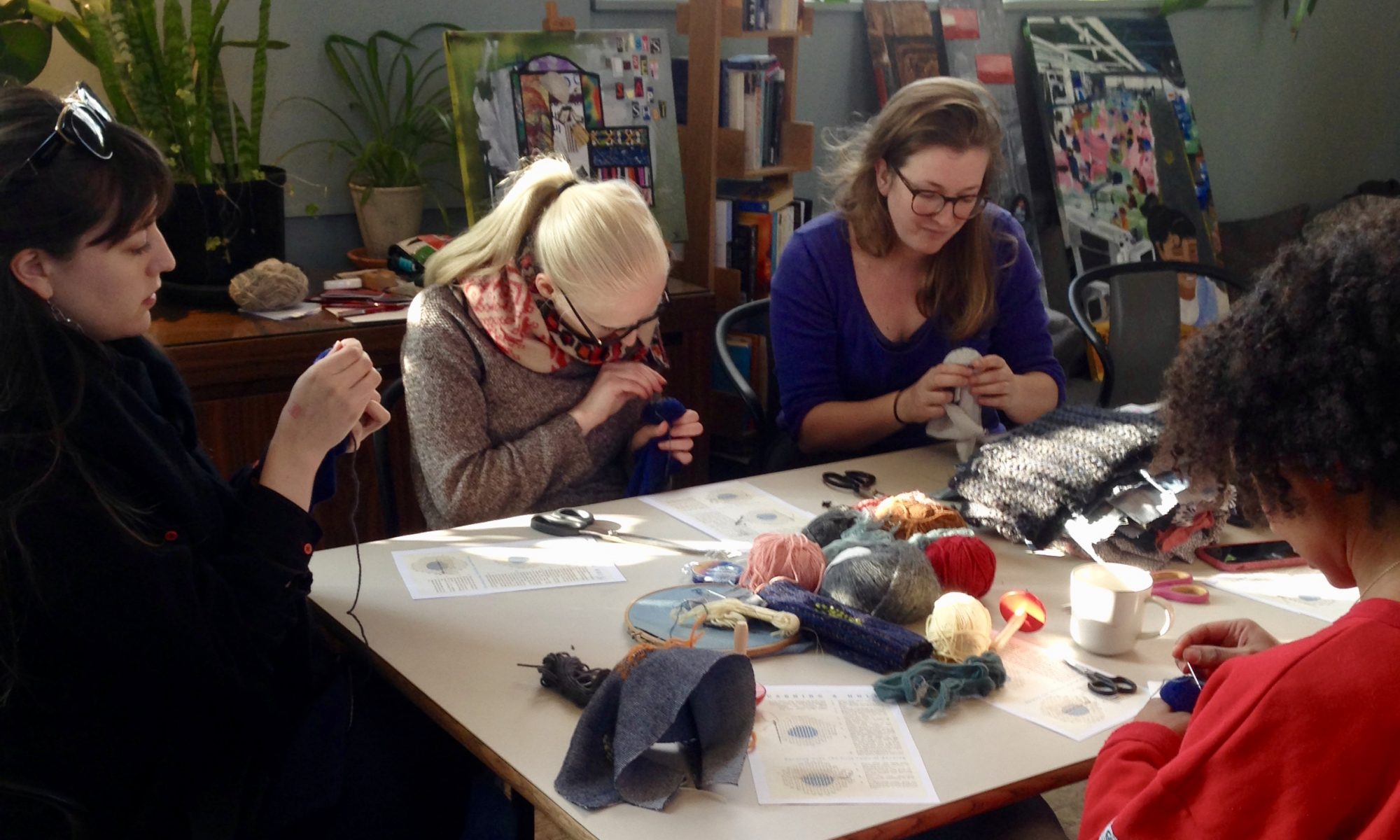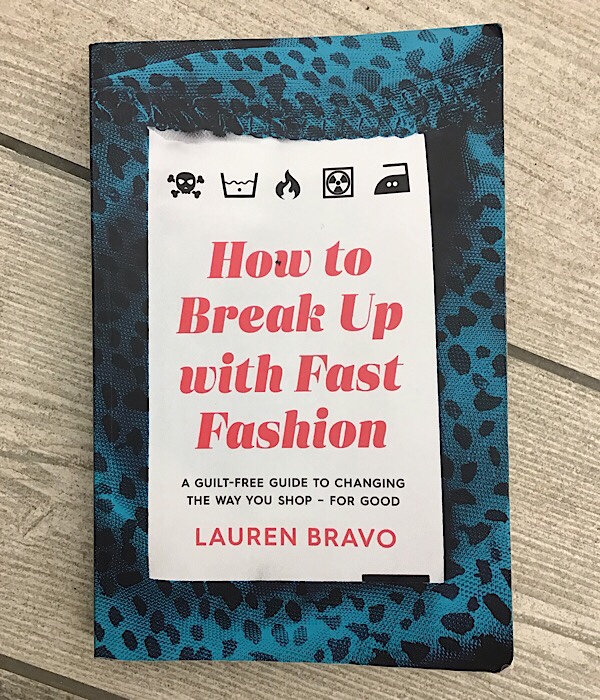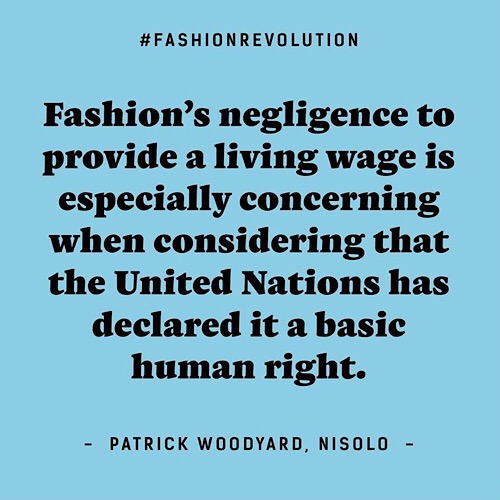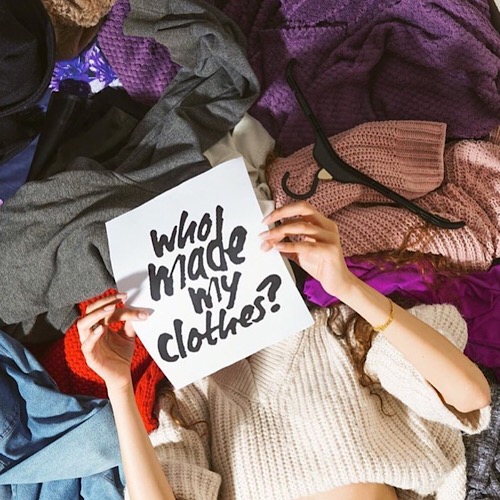Eleanor’s Thoughts
‘Never doubt that a small group of thoughtful, committed citizens can change the world; indeed, it’s the only thing that ever has.’
Margaret Mead
This is one of my favourite motivational quotes. It’s one I kept coming back to as I was researching sustainable fashion at university, and one I think of when I’m sat trying to work on my own in my little bedroom feeling like this whole pursuit is too overwhelming.
When Lauren Bravo used it in the closing chapter of her book How to Break Up with Fast Fashion, I knew this book was one that really reflected how I feel about our personal potential to create a sustainable fashion industry. Trying to enact any kind of positive change in this vast and complex industry can feel pretty impossible at times, and many people will tell you it is. The internet may have made buying fast fashion even easier and quicker, but it’s also the thing that can help make finding sustainable fashion comrades in the area you live and all over the world far simpler. Community and collaboration drive this movement.
The stats that Lauren introduces the book with are a daunting read, and even as I begin to feel that I’m aware of many of them, there’s another one that shocks me. The fact that out of ’71 leading retailers in the UK, 77 per cent believe there is a likelihood of modern slavery (forced labour) occurring at some stage in their supply chains’ is a figure that’s hard to forget. Lauren discusses these heavy ideas with clarity and compassion, whilst moving on to discuss the conflicting emotions that can come through quitting fast fashion with playfulness and honesty that makes this challenging topic engaging, and actually easy to read. As someone who has just spent the last year of their life going through a break-up with a real-life human being, the swaying from anger to adoration to reflection to acceptance is very easy to empathise with. Not all the things we love are good for us and in this case, they’re not good for the people making our clothes or the planet.
Personal anecdotes are used to bring a balance of perspective to the large-scale problems tackled in the book. Percentage of Lauren’s clothes currently covered in food stains? Forty. One of the best techniques for replacing that ‘treat’ that fashion can be in your life? Lots of baths (not a euphemism apparently).
An outfit should always have at least 20 per cent space for pasta.
Lauren Bravo, How to Break Up with Fast Fashion
Whilst at the same time the ‘Where is the humanity?’ chapter discusses the many ways in which garment workers’ human rights have been disregarded unflinchingly. The death of 1,138 people in the Rana Plaza collapse in Bangladesh in 2013 is a disaster that many were aware of at the time, but other building collapses and fires are simply forgotten. Lauren discusses in this book how the sustainability movement can often be too focused on a middle-class white women’s perspective which can bring with it accusations of a white saviour complex or companies who ‘greenwash’ purely for profit. It’s a complex issue which Lauren discusses much better than I could do here, and it’s clear that this perspective needs to change to reflect the experience and concerns of all parts of society for the movement to continue to grow.
But when considering our next fashion purchase, recognising that every item of clothing is handmade and that those hands have often been exposed to harsh working conditions is a simple way to respect the human rights of the garment workers.
‘We can only do the best we can do. But we can probably do better than we are.’
Lauren Bravo, How to Break Up with Fast Fashion
This quote repeated often throughout the book is something to remember in those conflicted moments in our shopping future. It’s going to be hard to avoid buying from a fast fashion shop ever again, their whole business model relies on making it easy, quick and cheap. With every time you have to compromise, there can be another moment where you take one step forward, whether it’s fixing your jumper, going to a ‘clothes swap’ or just not washing your clothing as much as you used to. Dressing in protest does not have to be reflected in the style of clothes you wear, as Lauren discusses, a radical act can be as simple as re-wearing the clothes we already own.
Sarah’s Thoughts
I love fashion. I have done since I was young. From dressing up Sindy dolls in my own creations to working in the fashion industry. My first job after fashion college was as an Assistant Buyer for a large high street retailer. A regular task was to trawl the length and breadth of Oxford Street to ‘comp shop’. Basically playing detective on what your competitors have in their store: price, colours, fibre content, where it is made and most importantly what did they have that we didn’t. I was literally shopping for a living.

I soon fell out of love with shopping for work and for myself. So when I was asked to review a book written by a woman who’s hobby was shopping on ASOS, I didn’t think it would be for me. My mind changed the minute I turned the last page on the first chapter. I haven’t stopped quoting lines from the book and telling friends and our workshop participants about it.
Lauren approaches a wide range of complex subjects with humour, and yet makes us aware that the fashion industry and our relationship to clothes is complicated. For example, during our workshops we are often asked if cotton is more sustainable than polyester but it isn’t as simple as yes or no. Neither is trying to explain that stopping buying clothes altogether puts jobs within the global fashion supply chain at risk. This quote sums up the conundrum:
‘’Between balancing environmental impact and human rights, spending more but buying less but still keeping garment workers in (fairly paid) jobs, the whole business of ethical shopping can start to feel a bit like that puzzle where you have to get a wolf, a chicken and a bag of corn across a river.’
Lauren Bravo, How to Break Up with Fast Fashion
I’ve had many discussions with friends trying to explain that just because a certain brand is expensive doesn’t make it more sustainable than a cheaper one. I’ve ear-marked this page of the book to bring out in the pub when the discussion arises again:
‘The price you pay for the garment is not always reflective of the quality of the garment, and definitely not reflective of the sustainability of the garment.’
Dr Sumner, Lecturer in Fashion and Sustainability, Leeds University
Despite my protests, I’ll admit I have three items of clothing from too-expensive-for-my-budget brands that I bought in the sale and I have never worn. My usual excuse of ‘I’ll slim into them’ but three to five years later I still haven’t. I teach people to repair and upcycle their clothes and yet it took for me to read this book to remember those unloved purchases hanging in my wardrobe. I’m now on the lookout for second-hand pieces of fabric that I can use to make the clothes bigger and finally wear them!

‘We need to stop shopping as though clothes are toothpaste, but equally we need to stop using the phrase ‘investment buy’ as a blanket excuse to spaff money we don’t have, on clothes we don’t need. We need to establish what ‘value’ means to us.’
Lauren Bravo, How to Break Up with Fast Fashion
As a UK size 16, sustainable fashion brands do not cater to my size. I’ve managed to buy a few pieces such as organic cotton T-shirts and a swimming costume made from fishing nets found on the ocean floor. The author criticises the sustainable fashion companies for often only catering up to size 14 and I appreciated the author for her honesty. It isn’t easy to criticise companies that are improving the practices of the fashion industry. We want sustainable fashion to be mainstream and that means catering for all sizes.
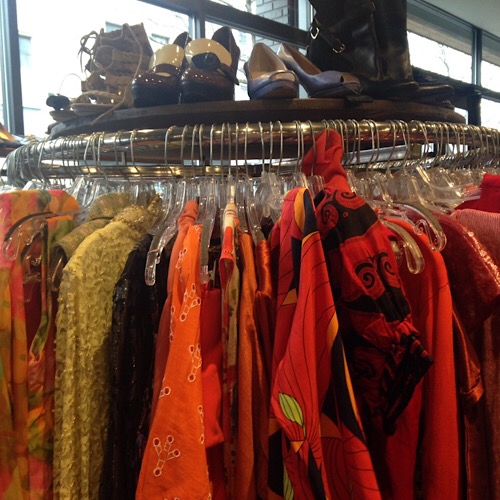
I paid particular attention to Lauren’s advocacy of vintage and second-hand clothing. A more affordable alternative to buying new sustainable fashion, and one I am a big fan of. There are several chapters full of practical tips on how to shop at vintage fairs and charity shops. Even discussing what to do about that smell associated with second-hand clothes.
‘’The best solution is to keep our clothes in action, whether that’s by us or by a brand-new owner.’
Lauren Bravo, How to Break Up with Fast Fashion
Of course, I am biased and particularly enjoyed the philosophy and practical tips on how to care for our clothes, mend them and love them. Again, I’m guilty of teaching people to mend their clothes and yet my own mending pile never seems to get smaller.
‘…If fast fashion is the devil then home sewing is the saintly alternative…
Lauren Bravo, How to Break Up with Fast Fashion
Remember the golden rule of wardrobe maintenance: a disaster is just a craft project you haven’t met yet.’
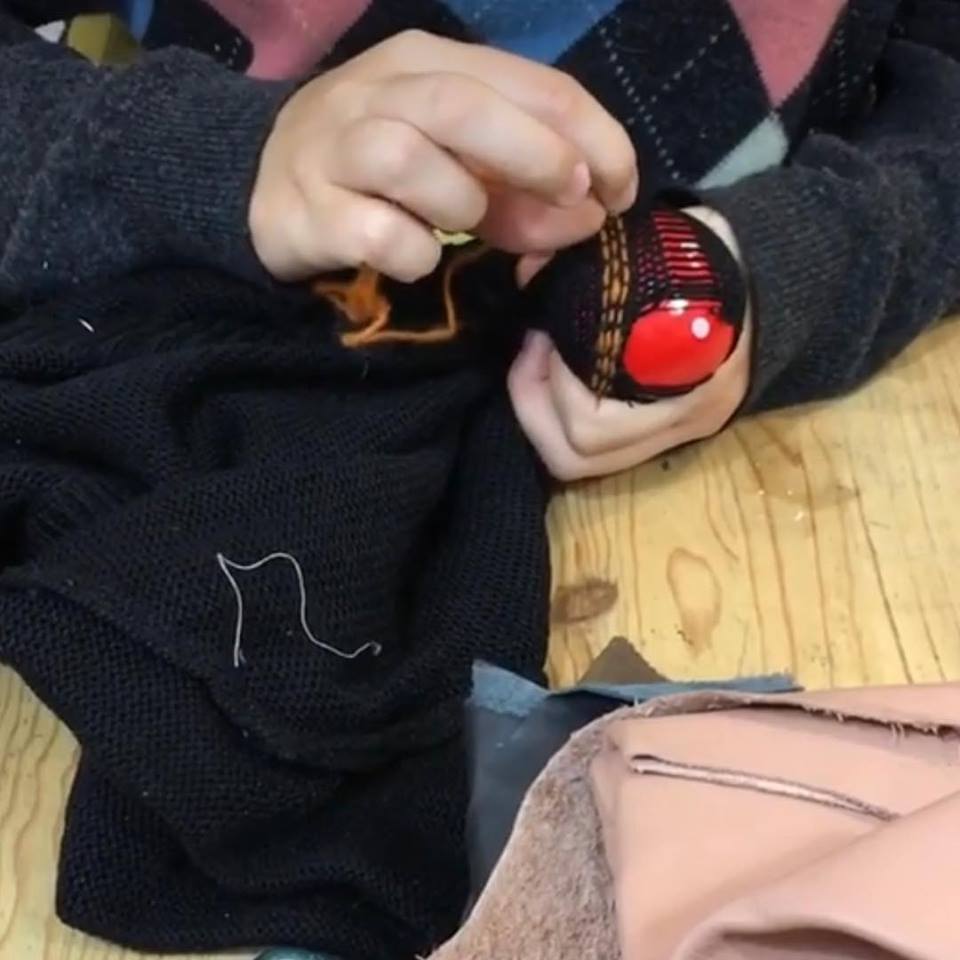
I really enjoyed reading How to Break Up with Fashion Fashion. It was engaging, funny and enlightening. Most of all the book reminded me that I can do more to improve my carbon footprint when it comes to fashion. I will make more of an effort to love the clothes I own, alter them, look after them and most of all enjoy wearing them.
“If the most sustainable item of clothing is the one we already own, then appreciating and wearing those clothes is one of the most powerful differences we can make.”
Lauren Bravo, How to Break Up with Fast Fashion

How to Break up With Fast Fashion Book Launch at Foyles, London. Lauren Bravo in conversation with Katherine Oremrod.
Lauren Bravo’s Top Tips on How to Break Up with Fast Fashion
- Unsubscribe from all of your fashion related mailing lists
- Edit your social media feeds – swap accounts that make you want to shop to those who are into slow fashion
- Turn to your own wardrobe. Get it all out on the bed and confront yourself with the volume you own
- Take each piece and ask yourself why did I buy it? Why did I think I want it? Why haven’t I worn it?
‘Learn from this future you! You can learn from past you mistakes. Make clothes work harder for us. It is not sustainable behaviour to buy, wear once and resell. Hopping off that trend treadmill stopped me wearing things that didn’t suit me.’
Lauren Bravo speaking at Foyles Bookshop, London Jan 2020
